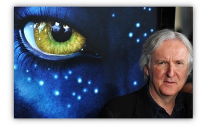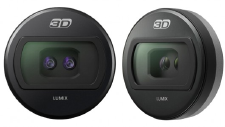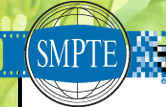News Corp. chairman and CEO Rupert Murdoch previously said …(excerpted)
FirstShowing.Net —James Cameron Delivers Updates on Avatar 2 and Re-Release
Yep, James Cameron and Avatar are back in the news again, but … First, he confirmed that he is producing Guillermo del Toro’s At the Mountains of Madness (announced a few weeks ago) and that they’ll shoot it in native 3D using next generation 3D cameras. [Surprise?]
We don’t exactly know what Cameron will be directing next, … he’s been getting inspiration for Avatar 2 by traveling down to South America and meeting with native tribes. “I have an overall narrative arc for [Avatar] 2 and 3, and there are some modifications to that based on my experiences in the last few months from having gone down to the Amazon and actually hung out with various indigenous groups who are actually living this type of story for real… but it’s not changing the overall pattern,” he said.
Finally, Cameron talked about converting Titanic to 3D and also complained about how terrible the Clash of the Titans 3D conversion was (as we all know). …
Marketsaw.blogspot — EXCLUSIVE: James Cameron Interview! Talks AVATAR Re-release, Sequels, 3D Conversions & Working With Del Toro!
[Listen to the audio interview on this page]
0:40 – Cameron confirms he is producing Guillermo del Toro’s AT THE MOUNTAINS OF MADNESS. The movie will be shot in native 3D using next generation FUSION 3D cameras from Pace. …
2:30 – Cameron talks about 3D conversions. TITANIC’s conversion is taking 8 months to a year to complete, not a fast turnaround like CLASH OF THE TITANS. Cameron: “(TITANS) showed a fundamental lack of knowledge about stereo space, …
5:00 – Cameron on how they are technically converting TITANIC. “You just can’t cut out edges, you’re going to get flat people moving around.” He will be using all his knowledge to put things on their right depth planes. They had tests for TITANIC from seven different conversion vendors on the exact same shots and they got back seven different answers as to were they thought things were spatially. “Some of them were not bad guesses and some of them were ridiculous.”
6:50 – The whole argument about conversion will go away for high end, first run 3D. Two years from now when there are thousands of 3D cameras out their shooting live feeds to 3D broadcast networks, how can a producer go to a studio and say…
9:05 – Cameron on talking with Steven Spielberg about converting his classic movies to 3D. …
11:20 – Cameron talks about AVATAR 2’s current status. …
12:04 – He is focusing his writing right now on the AVATAR novel (corresponds to the first film)…
12:45 – The AVATAR re-release will have 9 extra minutes, not 8 and it will all be CG. No extra footage of live action characters drinking coffee. Rainforest; some at night; a hunt sequence – …
15:45 – Cameron does not have the release timing of the 3D Blu-ray as …



